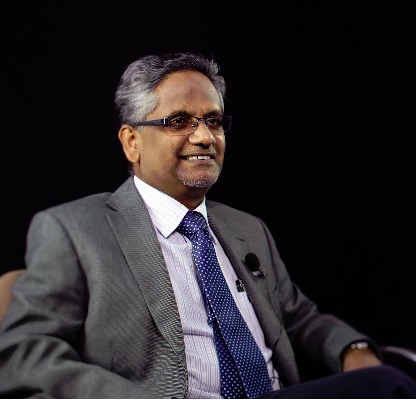1,200 R&D engineers power Motorola in Penang
By Karamjit Singh April 10, 2013
- Ground zero design and development work done by mainly local grads
- Works with CREST to help build up E&E ecosystem to keep MNCs in Penang
 TO get an idea of how high the bar is set at world-class companies, just ask Dr Hari Narayanan (pic), director of engineering and head of research and development at Motorola Solutions in Penang, on what he aims for:
TO get an idea of how high the bar is set at world-class companies, just ask Dr Hari Narayanan (pic), director of engineering and head of research and development at Motorola Solutions in Penang, on what he aims for:
“How to make sure that we are far more productive this year than last in both how we conduct our R&D and run our manufacturing,” he says.
It’s not to say that Hari and his team of 1,200 R&D engineers had a poor year in 2012. On the contrary, “we did a fantastic job last year but got to do it better this year,” he says.
And this doing better includes focusing closely on tech trends, either from competitors or from customers. “We need to know what our customers need and then convert this need into products that they can use. And we need to do this better,” he adds.
For that, Hari relies on his team of world-class engineers, over 95% of whom are Malaysian and predominantly locally trained. He is clearly very proud of them, pointing out that Motorola has long moved beyond manufacturing and into R&D in Malaysia with a heavy reliance on local engineers.
“With the right nurturing, we have been building capability in them and indirectly have been enhancing the sustainability and competitiveness of the Malaysian economy,” he claims.
With the bar continually set higher at Motorola Solutions, “we are doing ‘ground zero’ design and development here,” he says, and with a 'Chief Technology Office' in Penang comprising around 40 top engineers whose job is to look two years out in terms of what technologies will be adopted, strengthening the foundation of the engineers it hires is paramount to Hari and Motorola.
And here there is a challenge. Because of the current strong demand for engineers, most Malaysian universities are producing generalists, but this talent pool does not meet the high demands from the likes of Motorola and many other R&D outfits in Penang.
Hari feels there is a need instead to focus on specific universities, and within those universities, to focus on specific areas of engineering. “I think this can help in the long run.”
Responding to an observation that Malaysia has no world-class engineering schools despite the presence of a world-class E&E sector, a problem that Hari sees at present is that the universities are academically biased and are even trying to cover too many things that industry needs, and this causes them to get diluted, in a sense.
“But it is not possible for universities to produce industry-ready engineers,” he says, pointing out that for an R&D organization like his, it takes an average of between 12 months to 18 months to get an engineer up to speed.
“A lot of nurturing needs to be done here with senior R&D architects leading the way to guide and mentor the new hires,” he adds.
Naturally, the universities will not have access to this type of skill sets and therefore a more practical approach is to infuse practical aspects of what industry needs into the curriculum – in the form of industry-type projects for students to work on practical problems to give them a taste of interpreting theory into real challenges faced in the field.
Motorola has been working with some universities in this aspect and has been successful in addressing some of the concerns about the curriculum being too theoretical. But more needs to be done and in an organized manner, which is why Motorola is working with agencies such as TalentCorp and the year-old Collaborative Research in Engineering, Science and Technology (CREST).
The initiative with TalenCorp includes a few other large E&E companies in Penang and is called Fast Track, where engineering students go in as interns for a one-year training program.
“We are also one of the founding members of CREST whose purpose is to spark the growth of the E&E ecosystem in Malaysia, including nurturing a strong group of suppliers in the E&E space while encouraging specific universities to take up specific technology focus areas which they can then work with industry to develop higher expertise and skill sets,” Hari says.
While acknowledging that Motorola can do better in terms of working with universities, Hari sees CREST as a crucial builder of bridges, linking industry to not just academia but to small and medium enterprises (SMEs) too.
“We have already received an R&D grant from them and have a successful collaboration with University Sains Malaysia (USM). But we need more such efforts,” he says, expressing the hope that the strong start with CREST will be sustained to further build out the E&E ecosystem in Malaysia.
“Next year is the 40th year for Motorola in Penang and if we want to keep the MNCs (multinational corporations) here for another 40 years, we have to nurture the E&E ecosystem in Malaysia to be a lot more robust, with universities and SMEs playing a key role, as well as government and MNCs like us,” he adds.
For more technology news and the latest updates, follow @dnewsasia on Twitter or Like us on Facebook.


